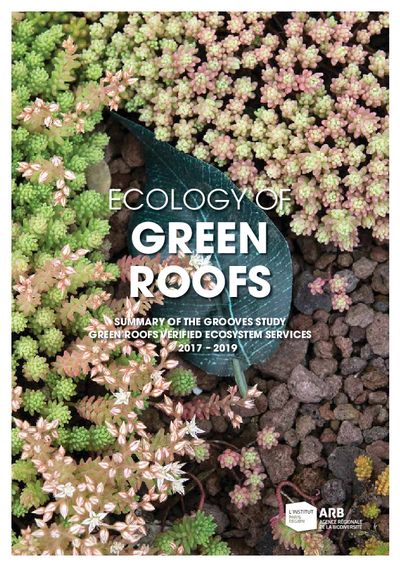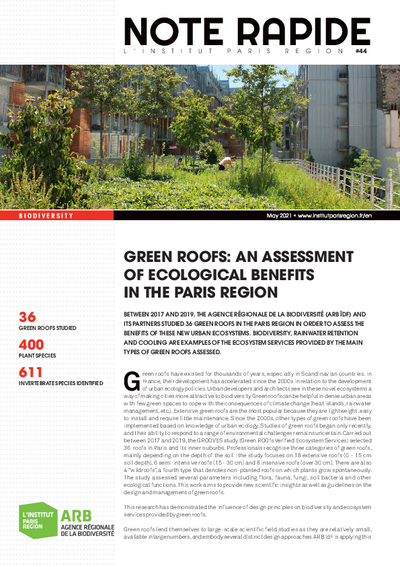Ecology of green roofs
Since the 1990s, the escalation of nature-oriented urban policies has been coupled with renewed interest in green roofs. Many ecological advantages are generally associated with planted roofs—hosting biodiversity, water retention, carbon storage, etc.—, but these benefits are still inadequately assessed. To remedy this, and to continue on from existing research work on the subject, the Agence régionale de la biodiversité en Île-de-France launched the GROOVES study (Green ROOfs Verified Ecosystem Services) in 2017, with support from the French National Museum of Natural History (MNHN), the Conservatoire Botanique National du Bassin Parisien (CBNPB), the Institut d’Ecologie et des Sciences de l’Environment IEES-Paris and the Institut National de Recherche pour l’Agriculture, l’Alimentation et l’Environment (INRAEUMR Agroécologie Dijon).
Thirty-six roofs of different types (extensive, semi-intensive and intensive) were analysed via inventories of plants and invertebrates (including pollinators) and substrate sampling, to gain a better understanding of their status and their ecological role. After three years of study, early results have confirmed the role played by green roofs in hosting biodiversity and fulfilling ecological functions. They also show that these benefits vary greatly between different planting systems, and this makes it possible to outline some major trends for roof designers and managers.
This study is linked to the following theme :
Environment

